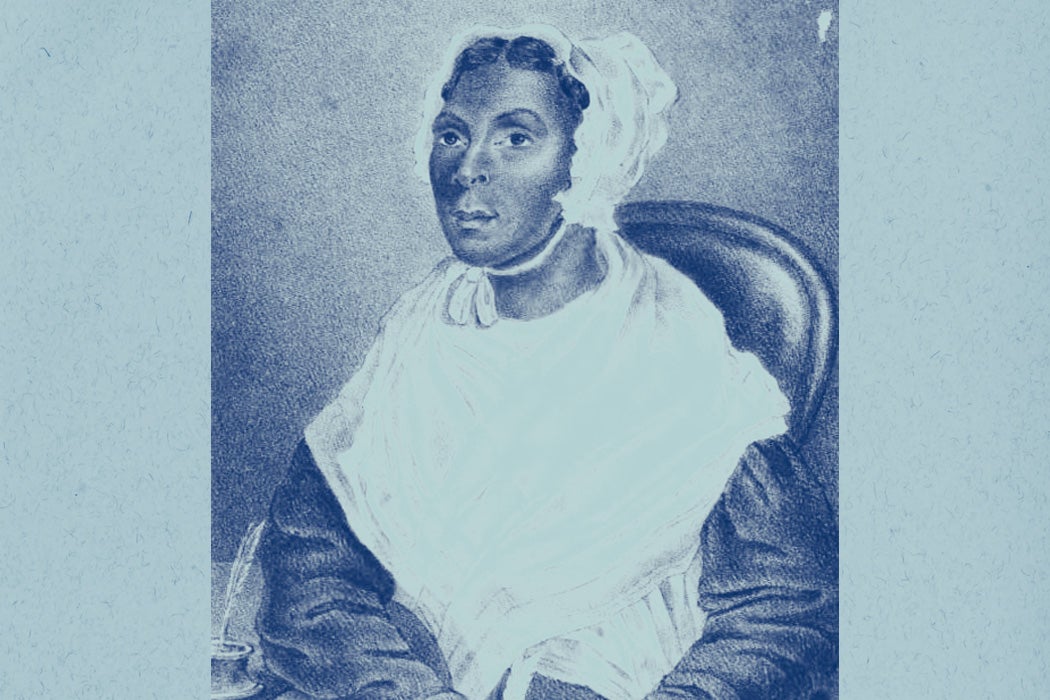Former first lady Michelle Obama’s memoir Becoming has taken the top spot on the New York Times nonfiction bestseller list since its release. In fact, the memoir’s sales have beaten that of any other book printed in the United States this year. As the first black first lady, Obama has been viewed as a pioneer since she first entered the White House.
Another pioneer wrote a book that set the precedent for Obama’s memoir, but her name has since faded from history. Jarena Lee—also recorded as Gerenia, Terania, Gerania, and Geranna—was the first female preacher in the African Methodist Episcopal (AME) Church. In 1836, she published The Life and Religious Experience of Jarena Lee, a Coloured Lady, Giving an account of her call to preach the gospel. She published an extended version in 1849. In “The Many Names for Jarena Lee,” scholar Frederick Knight describes her important role in the black literary tradition: “Jarena Lee’s accomplishments have drawn the attention of modern scholars, who have examined her autobiography as a window into the role of literacy, religion, gender, kinship, and work in early African American women’s history.”
Lee’s work was religious in nature, which was common at the time for female autobiographers. In her article “Jarena Lee (1783-18??),” Phebe Davidson touches on this truth when she writes, “As an autobiographer, Lee inherited the tradition of spiritual autobiography as it was practiced in the Puritan conversion narratives of early New England.”
Although it has a different focus, Lee’s work shares underlying similarities with Obama’s—noticeably the argument for gender equality. Lee felt called to preach much earlier than she was allowed to do so. Knight writes of Lee’s first attempt: “African Methodism’s founder, Richard Allen … rejected her request by pointing to the church bylaws that made no provision for women preachers.” But Lee didn’t see why she should be treated any differently from a man.
Lee writes in her book: “For as unseemly as it may appear now-a-days for a woman to preach, it should be remembered that nothing is impossible with God. And why should it be thought impossible, heterodox, or improper for a woman to preach? seeing the Saviour died for the woman as well as for the man.” After the birth of at least two children and the death of her husband, Lee returned to her church in Philadelphia and was given an opening.
Get Our Newsletter
Unfortunately, Jarena Lee’s pioneering works have faded into obscurity, even though—or perhaps because—she was up against tremendous racial and gender inequality in the antebellum United States. In “Triple-Twined Re-Appropriation: Womanist Theology and Gendered-Racial Protest in the Writings of Jarena Lee, Frances E.W. Harper, and Harriet Jacobs,” scholar Robert J. Patterson writes, “Given the illiteracy of some of the most well known African American activists during the nineteenth century, the revolutionary power of the written word should not be underestimated.”
Indeed, in her final paragraph, Lee asks the reader to forgive her writing’s imperfections: “Please to pardon errors, and excuse all imperfections, as I have been deprived of the advantages of education (which I hope all will appreciate) as I am measurably a self-taught person.” Everything currently known about Jarena Lee comes from her own narrative. Scant census records have found that she later became a washerwoman; and she is believed to have been buried in Philadelphia in an unmarked grave next to her husband. Knight concludes, “In writing her own story, however, she seized some control over how she would be defined and remembered.”







